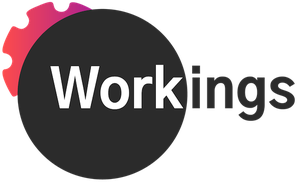It’s a safety issue: people need to feel that it’s okay to speak up about anything making them feel uncomfortable, and that they aren’t going to be made to feel less than due to their role, background, or neurotype. It’s a talent retention issue: top performers don’t stick around—especially at the rates we’re able to pay, given our size—if the culture feels icky and closed off or stilted. And it’s a business building issue: we simply do better work, more creative work, more efficient work, if we’re not mired in drama and everyone knows trust and wellbeing are top priorities.
The heavy lifting, in terms of culture creation, comes in the course of doing our actual work together. This is a relatively new dynamic for much of Steyer, since almost all of our employees historically were contractors whose work was managed by clients; now, the majority of our employees and their tasks are managed by Steyer directly. How our project and people managers set expectations, create psychological safety, and deliver feedback are at the foundation of a healthy culture. Our director of content services, Josh Krenz, is leading the charge to formalize “the Steyer way” of work management for our consultants. With the PMs on his team who lead our client accounts, he’s articulated—during each phase of a project—our expectations of consultant managers, both in terms of tasks to complete and the outcomes to create through daily words and actions. We have something similar for managers of our systems and deal team talent, too, as part of our ROWE.
Around and after that heavy lifting is the rest of our culture-building: our community conversations on Slack, our company meetings, our virtual and in-person events. And this is where things can get a little bit less clear-cut.
For starters, our consultants are still largely not on salary; they’re hourly or on a flat rate per deliverable, and client projects don’t often include buffer to pay folks for non-mandatory gatherings or water-cooler time. (Tony and I are working on how to shift comp structure, but today, this is where we’re at.) We offer a lot of ways for our people to connect with us and with each other outside of what’s required to do their work, but it’s at their discretion, since we can’t pay them for that time. Some people find a lot of value in access to those connection and learning opportunities; others don’t consider it the best use of their time.
Another major aspect: our remote-only environment structurally gives a relationship-building advantage to people who are strong verbal communicators. Communication styles vary; strong technical talent doesn’t necessarily go hand-in-hand with comfort in or preference for spontaneous, unstructured, real-time written/spoken conversation that involves lots of quick context-switching or interpretation of subtle social cues. But “spontaneous,” “unstructured,” “real-time,” and “written” describe the majority of Slack interactions to a tee, just by virtue of the design of the platform.
It can lead to some folks feeling set apart. And that wakes me up at 2:30am, because I want every employee to feel valued, regardless of their style and their desire/time for social interaction outside of basic team communication.
Here’s what we’re doing to protect the health of our workplace on the Slack and events front:
- We’re making very clear what’s optional and what’s mandatory. Anything critical goes out explicitly via Slack (in specific channels) and email; folks can mute or leave non-essential channels anytime. Skipping social events is completely fine and doesn’t impact standing. Building strong working relationships with direct colleagues is required, but socializing beyond that is entirely optional—no need to chat about gardening or football with the co-CEOs to feel equally valued at Steyer.
- We plan and host a variety of different kinds of conversations and events to cover our bases with different neurotypes and personalities. We deliberately and routinely start conversation on Slack that lends itself to asynchronous participation and nonverbal participation (photos, gifs). A portion of our virtual social events are more structured (games with clear instruction, topics announced ahead of time, listening-only, etc.) to make them less stressful for folks who perhaps don’t love freewheeling discussion. We have Slack channels devoted to interests, not just open-ended chitchat.
- We ask for feedback on our culture and take feedback seriously when we receive it.
I do think we can be louder than we are today about how okay it is to be quiet. (That’s part of the reason I’m writing about it here in Workings!) Lurkers are welcome. And for those of our employees who want it, we have plenty of connection points to help them feel a little bit less alone in their home offices.
If you’re interested in sharing, I’d like to hear from you about the work cultures in which you’ve felt safest, and if there’s anything you think Steyer could be doing (more of, less of, or differently) to be a healthy workplace for all kinds of minds and hearts. You can always reach me at kreilly@steyer.net.
Thanks,
Katelyn
Photo by Joakim Honkasalo on Unsplash



